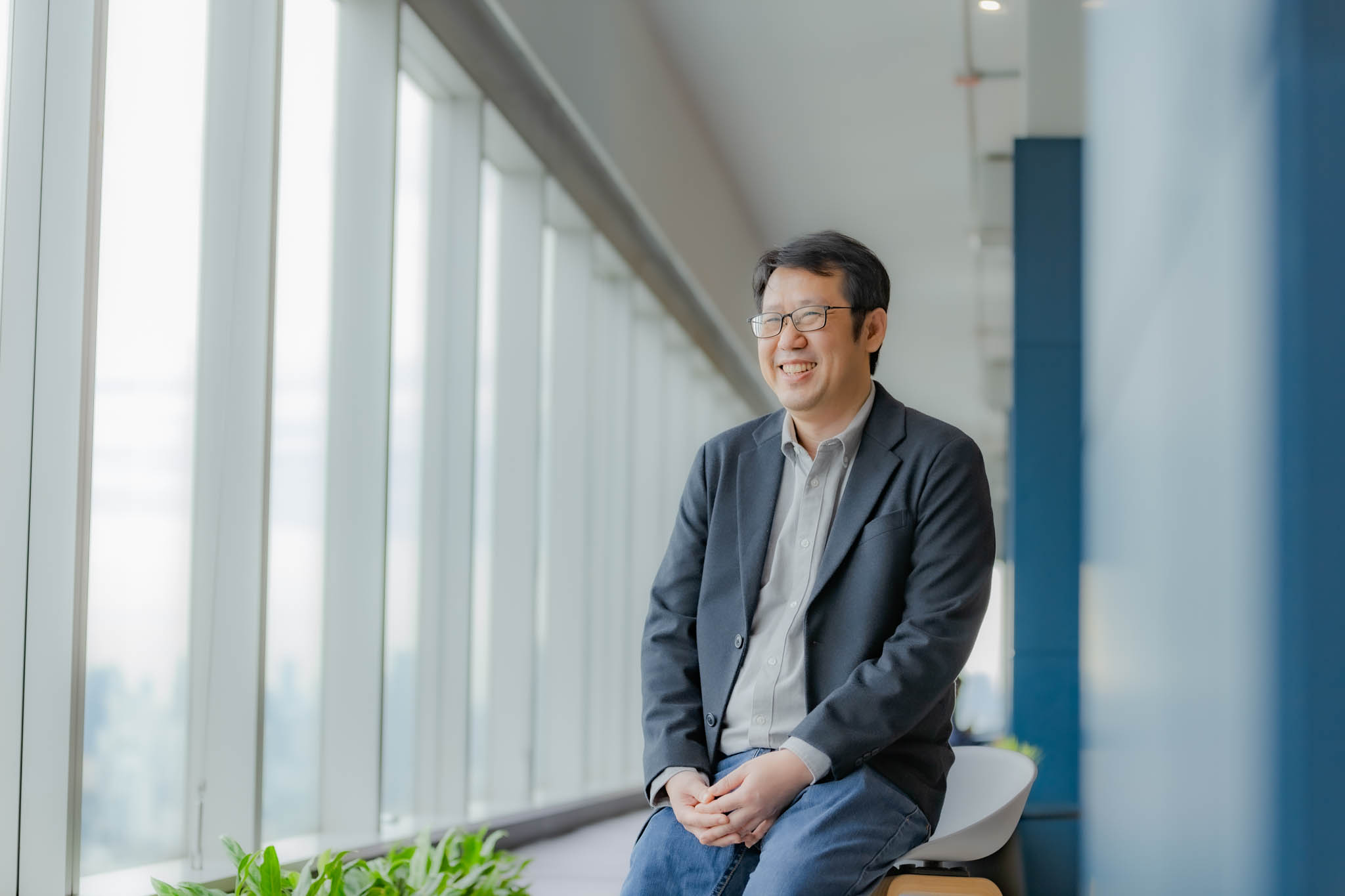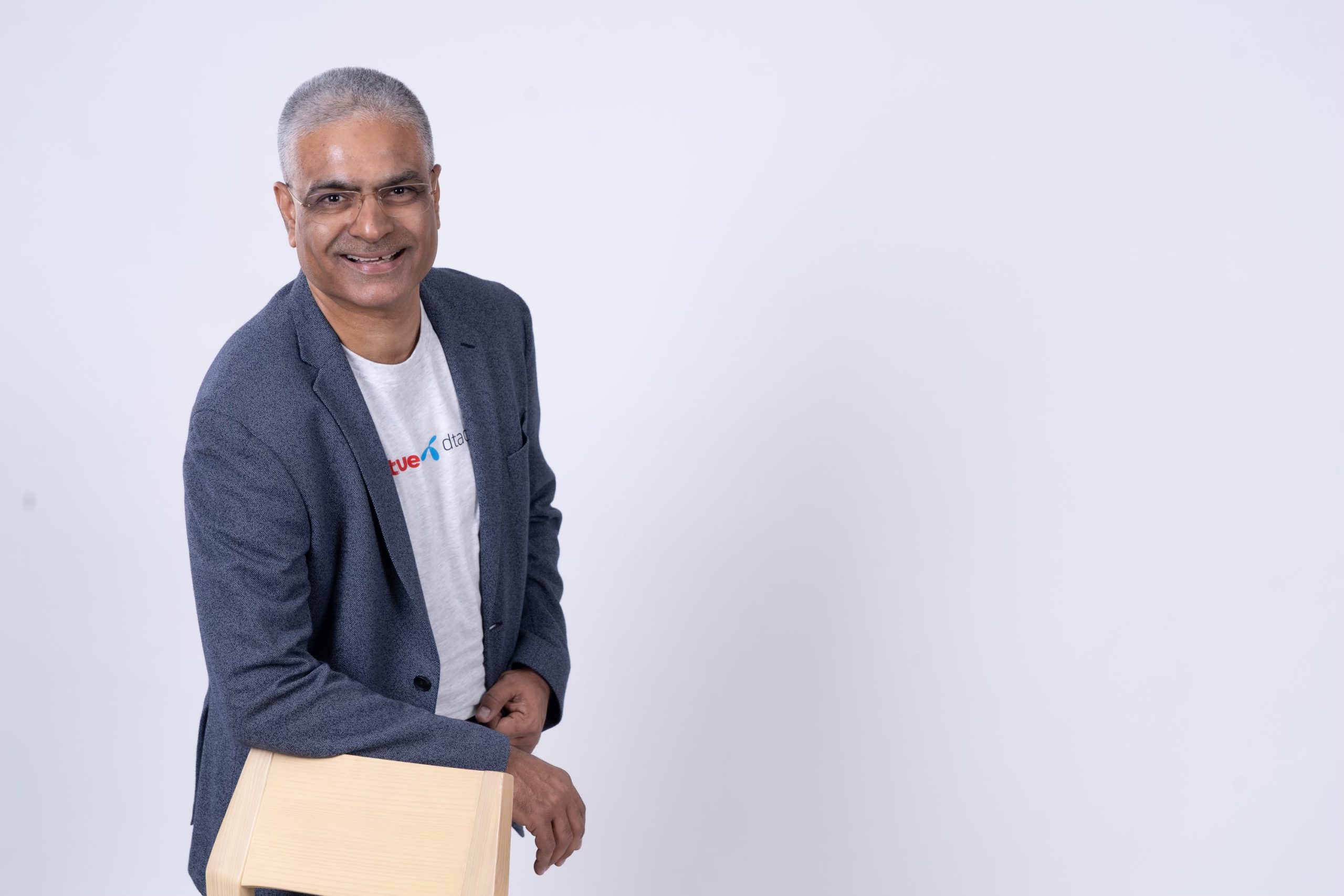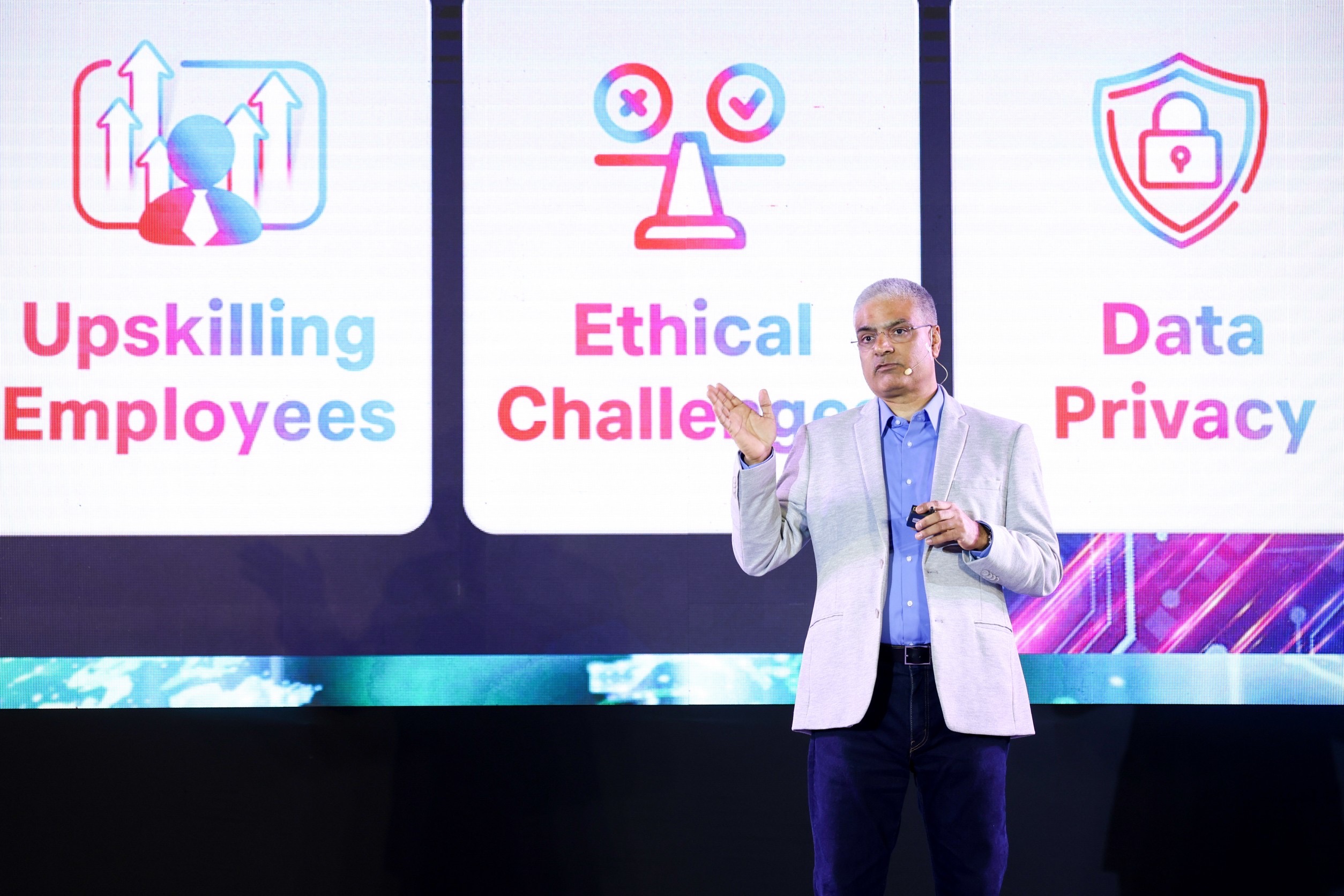In the fast-changing world of technology, automation has emerged as a significant force reshaping the future of work. True Corporation, driven by its telecom-tech ambitions, is at the forefront of this transformation. Its push for simplification and modernization is mobilizing the entire organization to rethink how it can better serve customers, act faster and increase efficiency.
True Blog sat down with Raewat Tankittikorn, Head of Channel Excellence, and Piyapan Nakayothin, Head of the Call Center, to learn about True Corporation’s transformation journey.
Simplification is Key
“Our ambition is clear. We want to build a unified operating model, system, and process,” Mr. Raewat said. “But you can imagine the complexity that arises when integrating two completely different operating models from two companies into one.”
The solution, simplification, is arduous work. The team must work together to find redundancies, streamline processes, and cut red tape.

“For each process, we looked at True and dtac’s operations and then we decide which model is more efficient. Then, we shift our operations towards that process. This is what we call simplification. The next step is to decide whether to go for automation or more intensive changes,” Mr. Raewat said.
Seven months into the merger of True and dtac, the team has tackled numerous legacy systems and internal complexities.

“Simplification is a prerequisite for the new system. We aim to leverage automation, such as robotic process automation, or RPA, to increase efficiency, speed up our operations, and minimize human errors,” Mr. Piyapan said.
“What kills automation is complexity. We need to simplify everything before we can automate. We also need to keep the process simple for artificial intelligence to work effectively,” Mr. Raewat added.
“What kills automation is complexity. We need to simplify everything before we can automate. We also need to keep the process simple for artificial intelligence to work effectively,” Mr. Raewat added.

Touch-Free Operations
Touch-free operations have become a cornerstone of True Corporation’s transformation journey. With a commitment to simplification and automation, the company is rapidly moving towards a future where routine-based, repetitive tasks are seamlessly handled by technology, allowing employees to engage in more value-added tasks.
The company has set a target to automate 100% of its manual, routine-based tasks by 2027. For customers, this means automation will significantly improve digital and in-store experiences in touch points such as shops and call centers.
One tangible outcome is that all of the True shops are set to be paperless by the end of 2023. This will not only enhance service speed but also minimizes errors and strengthens data privacy standards by limiting data exposure.
Chatbots are also playing a critical role in modernizing customer service, with the ability to efficiently manage a significant portion of customer inquiries.
“In the call center, we have already deployed chatbots. We can handle 90% of chat calls with the bot for True customers, boosting efficiency and reducing response times. And now we are working to expand this feature to dtac customers,” Mr. Piyapan said.

“In the call center, we have already deployed chatbots. We can handle 90% of chat calls with the bot for True customers, boosting efficiency and reducing response times. And now we are working to expand this feature to dtac customers,” Mr. Piyapan said.
Balancing Automation and a Human Touch
Both Mr. Raewat and Mr. Piyapan agreed that automation alone won’t address all customers’ service needs. An empathetic understanding of these needs and maintaining a human touch are equally important.
“In general, we aim to steer customers toward digital self-service channels to ensure the smoothest experience and shortest wait time,” Mr. Piyapan explained. “But for elderly customers, for example, they usually prefer human interactions and more straightforward language. This differentiation helps optimize our customer experience.”

In customer-facing functions, True categorizes customers based the nature of their inquiries. This approach allows the operator to tailor the level of automation and human interaction accordingly.
“When a customer steps into a physical store, their expectation is to engage with a human agent. Although we have integrated AI to support salespeople in delivering more effective support to customers, we still highly value the personal touch,” Mr. Raewat added. “Also, telecom services often deal with complexities that aren’t easily automated, needing the expertise and problem-solving abilities of human agents to handle customer inquiries effectively.”

Building the Future-Ready Workforce
True Corporation recognizes the need to equip its workforce with the skills required for the digital age. Recently, the company launched the Citizen Developer program, designed to train employees without extensive IT backgrounds to create automation software using user-friendly, low-code or no-code tools. This initiative aims to boost operational efficiency, double productivity, and foster a digital culture. True has set a target of building 200 citizen developers within five years.

“We provide RPA training and encourage participants to propose ideas that solve process-related issues, be it through RPA or an app,” Mr. Raewat said. “As a citizen developer, you learn to be flexible and resilient to keep up with the fast pace of technology.
Transforming into a telecom-tech leader starts and ends with people. Employees need motivation to embrace new technologies, challenge the status quo, and be open to adopting technologies like RPA, machine learning, and generative AI in their workflows. Customers expect both authentic human connections and service at digital speeds. As True’s transformation speeds up, it is well positioned to deliver on this ambition.




